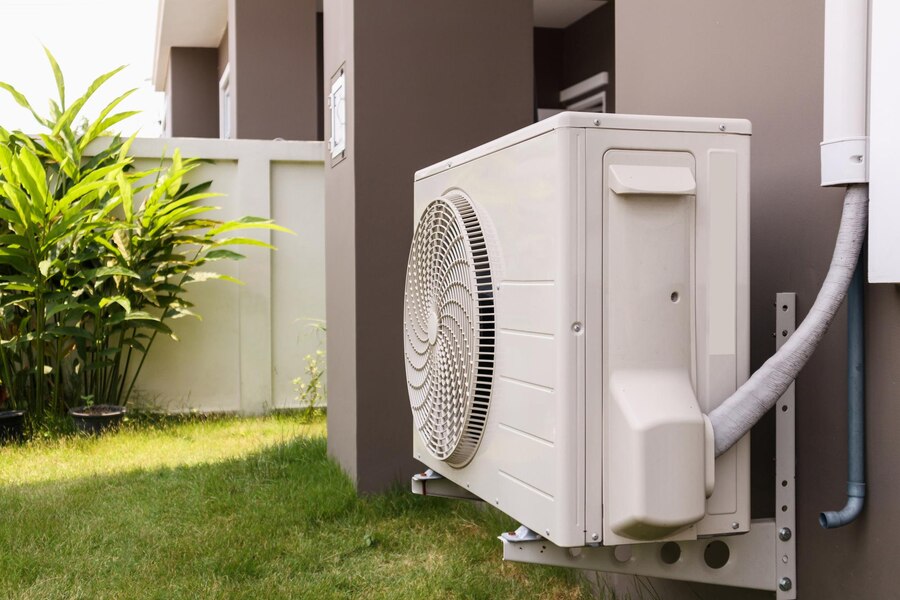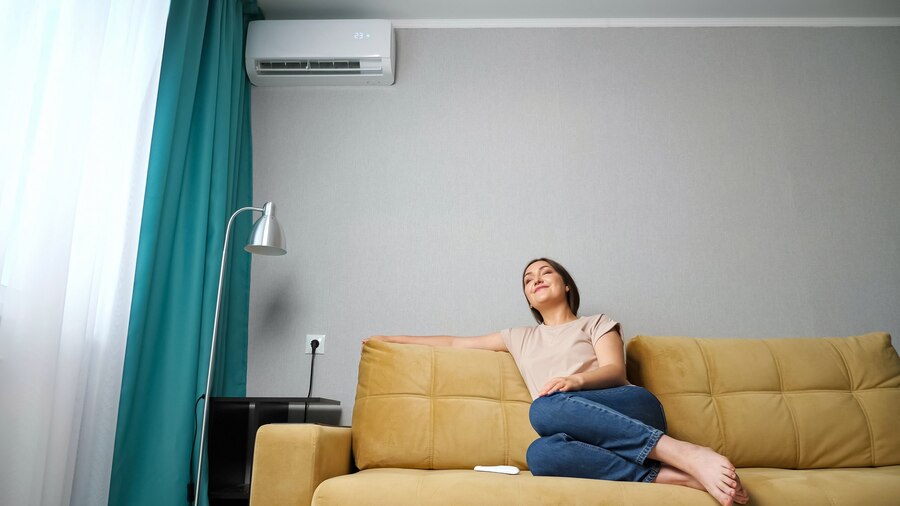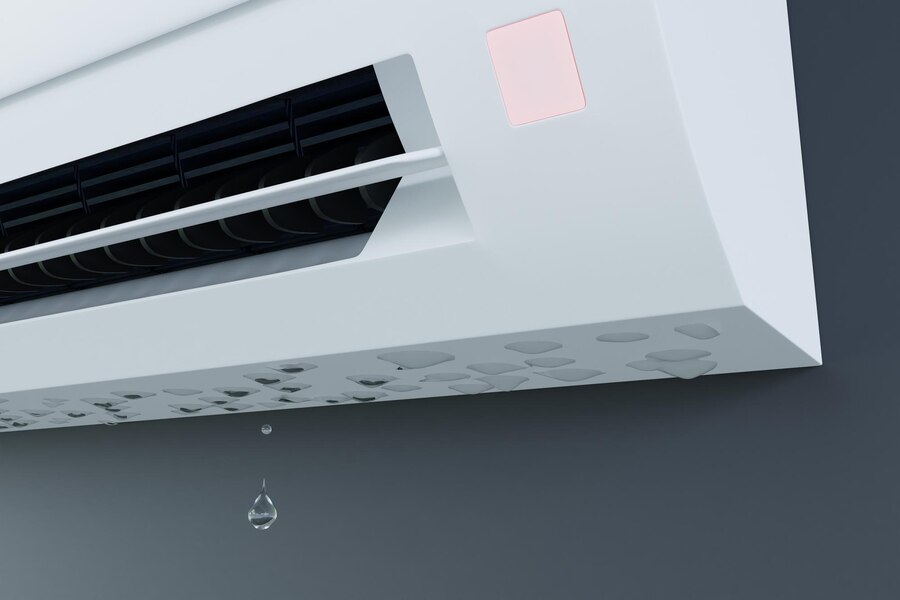


Heat pumps do more than heat and cool. They also help manage indoor humidity by pulling excess moisture from the air during cooling cycles. This extra step helps make indoor spaces more comfortable, especially in summer when humidity climbs. When things are working as they should, homeowners in Andover can expect smooth, quiet operation and balanced moisture levels across the home.
But when your heat pump stops dehumidifying properly, it’s hard to ignore. You may notice the air feels heavier, sticky, or damp even when the temperature on the thermostat looks right. Windows might fog up. Inside air might start to feel stale. If left unchecked, these problems can affect more than comfort. They can impact your energy bill and even lead to indoor air quality concerns.
Common Reasons Your Heat Pump Isn’t Dehumidifying Properly
Heat pumps are complex systems with several parts that need to work together. If one part slips, the whole system can lose efficiency. And when it comes to removing moisture from the air, the smallest issue can throw off performance.
Here are some common reasons why a heat pump may stop removing humidity like it should:
- Clogged air filters: Dirty filters limit airflow, which affects how well the system pulls moisture from the air. Restricted airflow means less contact with the evaporator coil, which is where dehumidification happens.
- Low refrigerant levels: Refrigerant helps cool the air and pull moisture from it. If levels drop too low, the system can’t work properly. This is a common issue when there’s a slow leak in the system.
- Faulty thermostat settings: If the thermostat is set to the wrong mode or temperature is set inconsistently, your system may not run long enough to strip moisture from the air.
- Lack of regular maintenance: Without yearly maintenance, dust and grime can build up throughout the system. Coils can get dirty, drain lines can fill up, and airflow can slow, all of which reduce how much humidity gets removed.
A family in Andover, for example, might have a heat pump running all day during a summer heatwave. If the unit isn’t pulling enough moisture out, everyone starts to feel sticky even though the thermostat says 72 degrees. It turns out, the air filter hasn’t been replaced in months and there’s low refrigerant due to a tiny leak. These are issues that can creep up slowly and don’t always set off alarms, but they directly block your system’s ability to manage moisture.
When any of these problems are present, the unit might still be cooling, but it won’t be creating the dry, balanced indoor climate Andover homeowners expect. Addressing the cause early can help restore comfort and protect your home from further problems.
Impact of Humidity on Home Comfort and Health
High indoor humidity doesn't just make a home feel muggy. It can directly affect how your body feels and how hard your HVAC system has to work. When the air stays damp, sweat doesn't evaporate as quickly, which keeps your body from cooling off efficiently. Even when it's 72 degrees, it might still feel uncomfortable if the humidity is off balance.
Persistent humidity inside your Andover home can start to show up in other ways too. Ongoing moisture may encourage stuffy air, minor mildew smells, or even condensation around windows. Over time, that kind of environment can affect more than just air quality. It could impact respiratory comfort, especially for people with allergies. Bedrooms, basements, and other low-airflow areas might feel the effects first.
Controlling this humidity isn’t about just keeping the AC running longer. It comes down to making sure the heat pump is doing its job fully, cooling and removing moisture properly. That’s where a closer look at your system’s parts and condition can make a real difference.
Steps to Diagnose and Address Dehumidification Issues
If your home feels more humid than it should, there are some steps to help narrow down the issue. Even if the unit continues cooling as expected, subtle performance issues can prevent it from removing moisture effectively.
Here’s where to start:
1. Inspect and replace the air filter – If it’s clogged or dusty, your system may struggle to move air through the coil, weakening its ability to remove moisture.
2. Check thermostat settings – Make sure the thermostat is set to cool and not auto or another non-cooling mode. Some settings may cause the system to cycle off too early, which reduces the time it dehumidifies.
3. Look for signs of low refrigerant – Noises, unusually long run times, or ice on the coil may suggest low levels. Only a professional can safely inspect and recharge this.
4. Check the outdoor unit – Make sure it’s clear of weeds, grass clippings, and debris. Blocked ventilation can reduce system efficiency and affect dehumidification.
5. Schedule professional maintenance – A full inspection includes cleaning indoor coils, checking refrigerant levels, testing for leaks, and confirming airflow is where it should be.
Skipping these steps often lets minor issues develop into larger ones. A homeowner in Andover, for example, put off routine inspection for two years. Once the home started developing a musty smell in the hallway, it turned out airflow inside the system had dropped due to grime buildup across the indoor coil. A professional cleaned it, adjusted the thermostat sensitivity, and the high humidity was gone within hours.
Simple Ways to Keep Heat Pumps Running Smoothly
Avoiding future humidity-related problems comes down to ongoing care. Heat pumps work all year long, switching between heating and cooling functions. That means they need steady attention even when they're technically working fine in one mode.
To keep things running smoothly:
- Replace air filters every one to two months during peak use
- Clear vegetation and debris from around outdoor units
- Don’t ignore slight changes in indoor air feel. Stickiness, smells, or foggy windows often mean bigger issues are on the way
- Schedule professional maintenance, especially prior to peak summer
A well-maintained heat pump can handle humidity just as reliably as it manages temperature. When filters stay clean, coils remain clear, and airflow flows freely, the system runs with fewer interruptions and keeps indoor humidity right where it should be.
Maintaining Consistent Dehumidification Over Time in Andover
If your heat pump isn’t pulling moisture from the air like it used to, that problem won’t self-correct. Whether the issue lies in low refrigerant, dirty parts, or simple system settings, it needs to be addressed with care. Each overlooked step adds strain to your system and makes your home less comfortable in the process.
Once fixed, staying ahead of issues with yearly maintenance and proper system use is what keeps the air dry, fresh, and cool season after season. For Andover homeowners, watching for early signs and getting support from trained professionals helps prevent small problems from turning into repair calls during the hottest days of summer. Keeping the system healthy means a healthier, more comfortable home.
If you notice your heat pump struggling to dehumidify your home, our professionals understand that balanced indoor comfort matters. By addressing issues like clogged filters or low refrigerant early on, you can prevent further complications and keep your indoor environment pleasant. For expert support with cooling issues, consider heat pump repair in Andover from MJB Heating & Air Conditioning. For a quick estimate or to book a service visit, please contact us today.
Customer Testimonials
proudly serving Wichita metro
Our Service Areas include



.avif)


















